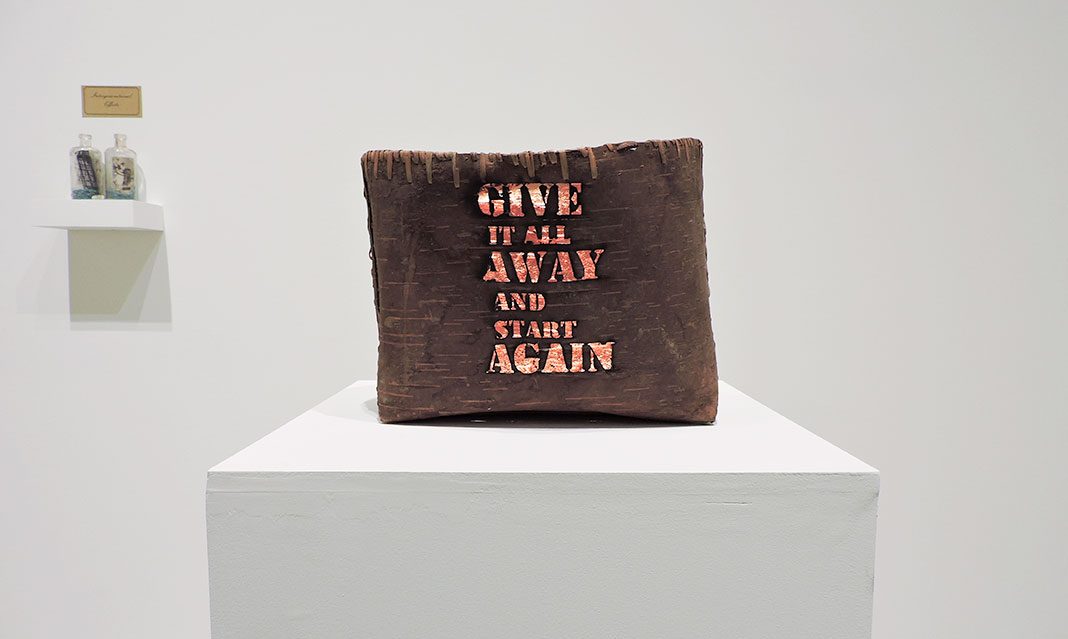#callresponse, the Blackwood Gallery’s newest exhibition, is a collaborative set of works that bring indigenous women together through culture and art. The works feature pieces that have been paired together by different indigenous artists, who take part in the #call section of the exhibit, and their respondent who is featured as part of the “response.” This pairing is significant because there is a mutual value of praise for one another. Indigenous art is not scarce in Canadian exhibits, but this one is intimate and inviting—something other galleries do not offer.
According to the gallery statement, the #call section is described as follows: “To support the work of Indigenous women from across Turtle Island through art commissions that drive dialogue and mobilize action on the topic of reconciliation with Indigenous Peoples. To stand together across sovereign territories as accomplices in awakened solidarity with all our relations, both human and non.”
The statement further describes the #response section as collection “ground[ing] art in accountability, value lived experience, and build upon systems of support.”
The #call and #response collaborators include Christi Belcourt and Isaac Murdoch; Maria Hupfield and IV Castellanos and Esther Neff; Ursula Johnson and Cheryl L’Hirondelle; Tania Willard and Marcia Crosby; and Laakkuluk Williamson Bathory and Tanya Tagaq. Together, these five collaborators explore the geographical importance of nationhood and each artist’s connections to the idea.
When I enter the exhibit, on my left, there is a large white wall that boasts a few works from the exhibit’s first set of pieces. I see a long, grey line that swerves up and down. It resembles the path the exhibit took from its origins at Woodbine to the Blackwood Gallery. When I decide to get some information about this piece, I’m informed that this map traces the artist’s hometown of Woodbine, to this very location on campus. It showcases a journey of exploration and travel.
To make this more interesting, the song performance that took place at the gallery on opening night featured Indigenous artists who worked alongside this piece. Ursula Johnson, in particular, created an instrumental piece that essentially highlighted the faults and the triumphs of this specific journey. The journey from the artist’s hometown to where she is now in Mississauga was a long and bumpy one. This made for a great musical piece that related to the experience.
Nearby on the wall, I stand by and look up at three sentences. The first sentence was written in Inuktitut, the second was the written pronunciation, and then the last was the English translation. In English, some read as “We are all together,” and “We walk with you.” It’s inclusive and refreshing, a way of inviting audiences to seek something bright in Inuit art.
Before I leave, I catch something that sums up the overall nature of the exhibit, one piece sitting on a high table near the back. A lonely birch basket sat by itself, and when I took a closer look at it, the words on the basket read: “Give It All Away And Start Again.” This, it seems, is the epitome of the exhibit itself. A fresh start and a new way of presenting art in a way that hasn’t been done before.
#callresponse runs until January 27 at the Blackwood Gallery.



